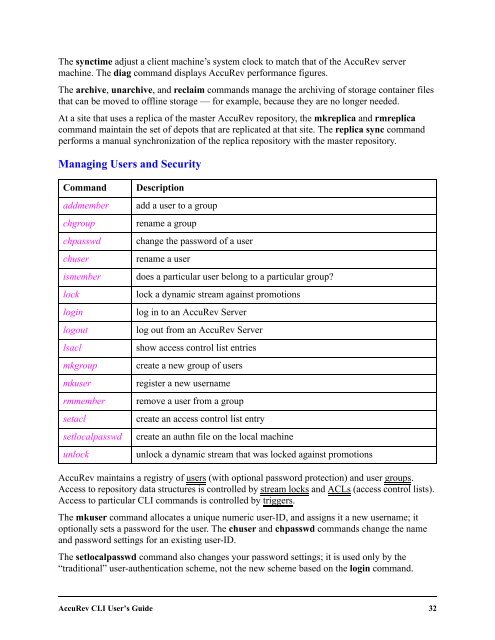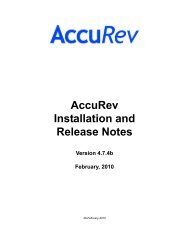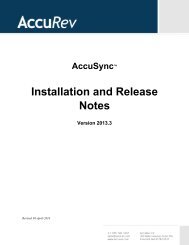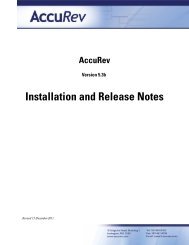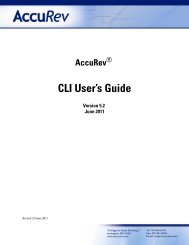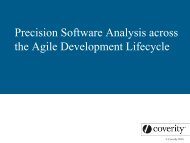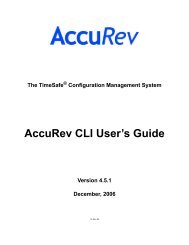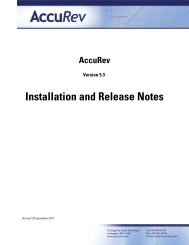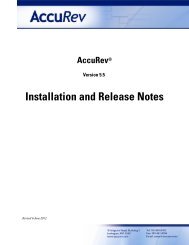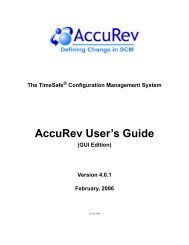You also want an ePaper? Increase the reach of your titles
YUMPU automatically turns print PDFs into web optimized ePapers that Google loves.
The synctime adjust a client machine’s system clock to match that of the <strong>AccuRev</strong> server<br />
machine. The diag command displays <strong>AccuRev</strong> performance figures.<br />
The archive, unarchive, and reclaim commands manage the archiving of storage container files<br />
that can be moved to offline storage — for example, because they are no longer needed.<br />
At a site that uses a replica of the master <strong>AccuRev</strong> repository, the mkreplica and rmreplica<br />
command maintain the set of depots that are replicated at that site. The replica sync command<br />
performs a manual synchronization of the replica repository with the master repository.<br />
Managing Users and Security<br />
Command Description<br />
addmember add a user to a group<br />
chgroup rename a group<br />
chpasswd change the password of a user<br />
chuser rename a user<br />
ismember does a particular user belong to a particular group?<br />
lock lock a dynamic stream against promotions<br />
login log in to an <strong>AccuRev</strong> Server<br />
logout log out from an <strong>AccuRev</strong> Server<br />
lsacl show access control list entries<br />
mkgroup create a new group of users<br />
mkuser register a new username<br />
rmmember remove a user from a group<br />
setacl create an access control list entry<br />
setlocalpasswd create an authn file on the local machine<br />
unlock unlock a dynamic stream that was locked against promotions<br />
<strong>AccuRev</strong> maintains a registry of users (with optional password protection) and user groups.<br />
Access to repository data structures is controlled by stream locks and ACLs (access control lists).<br />
Access to particular <strong>CLI</strong> commands is controlled by triggers.<br />
The mkuser command allocates a unique numeric user-ID, and assigns it a new username; it<br />
optionally sets a password for the user. The chuser and chpasswd commands change the name<br />
and password settings for an existing user-ID.<br />
The setlocalpasswd command also changes your password settings; it is used only by the<br />
“traditional” user-authentication scheme, not the new scheme based on the login command.<br />
<strong>AccuRev</strong> <strong>CLI</strong> User’s <strong>Guide</strong> 32


